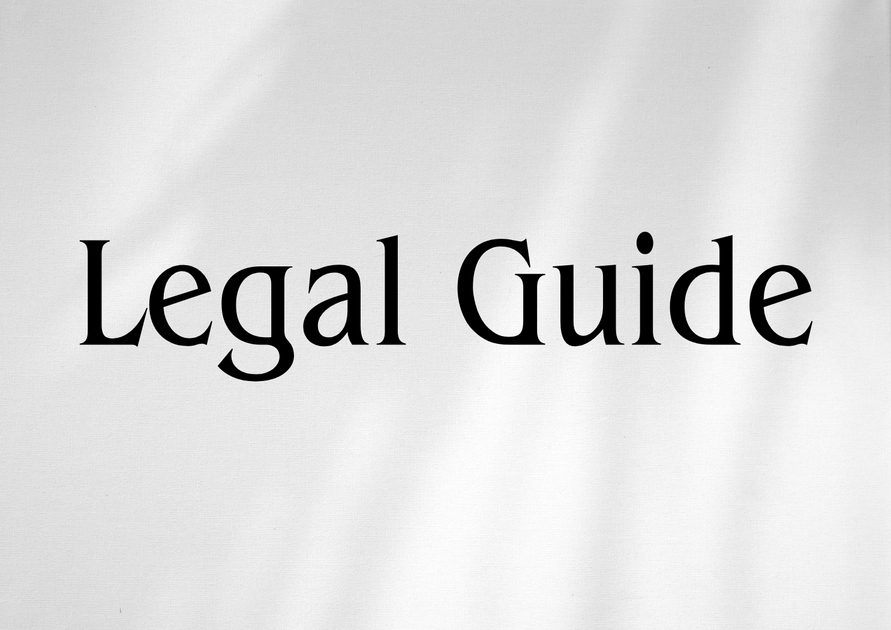Introduction
The United Arab Emirates (UAE) has established itself as a global aviation hub, boasting extensive commercial airlines, private charter operators, and a thriving aircraft leasing market. With the recent evolution of UAE commercial and dispute resolution law, understanding mechanisms for resolving aircraft leasing disputes is more critical than ever for stakeholders. Whether negotiating high-value leasing transactions or facing operational uncertainties, businesses, lessors, lessees, financiers, and legal practitioners require robust knowledge of available options—both arbitration and judicial—to effectively safeguard their interests. This article examines the legislative foundations, practical application, risks, and compliance strategies associated with aircraft leasing dispute resolution in the UAE, with a focus on new legal updates that shape today’s business environment.
Given the high value and inherent complexity of aircraft leasing agreements, coupled with the unique cross-border and regulatory factors at play in the UAE, prompt and enforceable dispute mechanisms ensure continuity and mitigate risk. This analysis is anchored by the latest provisions of Federal Law No. 6 of 2018 on Arbitration (the ‘UAE Arbitration Law’), the recent Civil Procedure Code amendments (Federal Decree-Law No. 42 of 2022), and prevailing practices in local courts, including the Dubai International Financial Centre (DIFC) Courts and Abu Dhabi Global Market Courts (ADGM Courts).
For executives, legal managers, and aviation professionals, understanding the nuanced choice between arbitration and court litigation, developments in enforcement, and best practices for drafting and maintaining compliance is essential to successful aircraft operations in the UAE.
Table of Contents
- Legal Framework for Aircraft Leasing in the UAE
- Dispute Resolution Mechanisms in Aircraft Leasing Agreements
- Arbitration in UAE Aircraft Leasing Disputes
- Court Litigation: Options and Procedure in the UAE
- Comparison Table: Arbitration vs. Court Litigation
- Case Studies and Hypothetical Scenarios
- Key Risks of Non-Compliance and Compliance Strategies
- Executive Summary and Best Practice Recommendations
Legal Framework for Aircraft Leasing in the UAE
Relevant Legislation
Aircraft leasing in the UAE falls under a composite legal and regulatory framework. The major pillars include:
- UAE Civil Transactions Law (Federal Law No. 5 of 1985): Governs general leasing and contract matters.
- Aviation Law (Federal Law No. 20 of 1991): Regulates civil aviation, including aircraft registration, safety, and airworthiness.
- UAE Arbitration Law (Federal Law No. 6 of 2018): Sets out comprehensive rules for domestic and international arbitration within the UAE.
- Civil Procedure Code (Federal Decree-Law No. 42 of 2022): Modernises and clarifies dispute resolution processes in courts.
- Enforcement of Foreign Judgments and Awards (Cabinet Resolution No. 57 of 2018, as amended): Lays out enforcement regimes for judgments and arbitral awards.
- Free Zone Legal Regimes (e.g., DIFC Law No. 1 of 2008, ADGM Arbitration Regulations 2015): Facilitate independent legal and dispute mechanisms.
Recent updates in 2022 and 2023, including amendments to the Civil Procedure Code and improvements to arbitral enforcement, have bolstered legal certainty, especially around the execution of foreign and domestic awards in the aviation context. The UAE’s adoption of the Cape Town Convention (2001), which enhances protection for secured creditors and lessors in cross-border aircraft transactions, further solidifies the jurisdiction’s international standing.
Key Considerations in Aircraft Leasing Agreements
- Choice of Law: Parties may agree to UAE law, foreign law, or a combination, with implications for dispute settlement and enforceability.
- Jurisdiction: Selection between UAE courts (onshore or free zone), arbitration institutions, or both.
- Enforceability: The ability to implement judgments or awards across the UAE, and internationally, is paramount.
- Regulatory Compliance: Ensuring contracts respect GCAA and UAE regulatory requirements for aircraft use and registration.
This framework underpins how disputes are structured, resolved, and enforced within and beyond the UAE.
Dispute Resolution Mechanisms in Aircraft Leasing Agreements
When disputes arise between lessor and lessee—be it over payment arrears, maintenance obligations, repossession, or operational breaches—the contract’s dispute resolution clause is the first port of call. The UAE legal landscape offers several routes:
- Arbitration: Private, flexible, and increasingly popular, especially for cross-border transactions. Governed by UAE Arbitration Law or free zone rules.
- Onshore UAE Courts: The traditional forum, now streamlined by modernised procedures, but still public and sometimes slow for complex technical disputes.
- Free Zone Courts (DIFC/ADGM): Common law frameworks offering neutrality, efficiency, and English language proceedings; attractive for international parties.
- Alternative Dispute Resolution (ADR): Options such as mediation and expert determination are occasionally stipulated in contracts, but less common for high-stake aviation disputes.
Deciding between arbitration and litigation is a strategic exercise hinging on contract terms, asset location, party residence, enforceability, and the nature of the dispute.
Arbitration in UAE Aircraft Leasing Disputes
Legal Basis and Features
Federal Law No. 6 of 2018 (UAE Arbitration Law) serves as the backbone for arbitration proceedings, harmonising with the UNCITRAL Model Law. Salient features include:
- Competency–Competency Principle: Arbitration tribunals have the power to rule on their own jurisdiction (Article 19).
- Party Autonomy: Parties may select arbitrators, venue, law, and procedural rules, subject to UAE public policy.
- Recognition and Enforcement: Arbitral awards are directly enforceable by UAE courts unless public policy or procedural flaws exist.
- Confidential Process: Proceedings are non-public, heightening commercial sensitivity.
Arbitration Processes and Best Practice
- Arbitration Clause Drafting:
- Clearly define the seat (UAE, DIFC, ADGM, or abroad), rules (ICC, DIAC, LCIA, ADGM, etc.), and language of the arbitration.
- Address multi-tier mechanisms (e.g., negotiation, mediation, then arbitration).
- Commencing Arbitration:
- Filing a Notice of Arbitration as per institutional rules.
- Selection/appointment of arbitrators.
- Initial procedural hearings and timelines.
- Award Enforcement:
- Submit to competent UAE court for recognition (Articles 52–54).
- Registry of the competent court may only refuse enforcement for limited reasons (public policy, incapacity, defective process).
Recent Federal Decree-Law No. 42 of 2022 has streamlined recognition and enforcement proceedings, reducing delays and empowering arbitration-friendly practices.
Practical Issues and Common Challenges
- Interim Relief – Obtaining urgent asset protection or injunctive orders from courts under Articles 18 and 21.
- Parallel Proceedings – Navigating risks where insolvency, regulatory, or criminal matters interface with arbitration.
- Selection of Venue – Preference for DIFC/ADGM seats may facilitate international recognition but risks enforcement hurdles for onshore assets unless ‘opt-in’ procedures are confirmed.
Recent UAE Arbitration Developments
- DIAC’s 2022 rule updates, improved speed, and efficiency for aviation matters.
- Extended enforceability of interim awards and cross-emirate recognition.
- Closer alignment with international best practices post-2022 Civil Procedure amendments.
Hypothetical Case Study: Arbitrating a Cross-Border Aircraft Lease Default
Imagine a European lessor faces non-payment from a UAE-based airline. The lease contains an ICC arbitration clause with a seat in the DIFC. The lessor commences arbitration in Dubai, obtains an award, and seeks enforcement against the lessee’s UAE bank accounts. The recognition process, now streamlined under the Civil Procedure Code, proceeds in the Dubai Courts. Barring procedural errors or public policy objections, the award is enforced, and the lessor is paid without recourse to lengthy domestic litigation.
Court Litigation: Options and Procedure in the UAE
Onshore UAE Courts
Onshore courts operate under the Civil Procedure Code, with layered jurisdiction (Primary, Court of Appeal, Court of Cassation) and both Arabic language and documentary formality requirements.
Procedure and Timelines
- Filing Suit: Claims are registered in the court where the aircraft, lessee, or headquarters are located.
- Exchange of Pleadings: Arabic translations and certified documentation required.
- Expert Reports and Hearings: Courts commonly appoint aviation experts to assess technical points.
- Judgement and Appeals: Multi-tiered appellate process can delay final outcomes.
- Enforcement: Court judgments are enforceable within the UAE, though cross-border effect can be less predictable than arbitral awards (subject to treaties and reciprocity).
Recent Procedural Reforms
- Federal Decree-Law No. 42 of 2022 cut timelines for urgent interlocutory relief and appeals, improving efficiency for commercial claimants.
- 2023 ministerial guidelines now permit more electronic filings and remote hearings, expediting complex disputes such as aircraft repossession actions.
DIFC and ADGM Courts
- English law-based common law courts within financial free zones—arbitral awards/judgments are directly enforceable within the free zone and may be recognised across the UAE (subject to prescribed opt-in requirements).
- Faster process with English documentation and reduced translation barriers, preferred especially for international lessors and financiers.
Example: Onshore Court Repossession Dispute
A UAE lessor seeks to repossess a leased aircraft after default by a local commercial operator. Proceedings in Abu Dhabi Civil Courts are subject to the evidentiary requirements and the need for expert reports. Judgment is rendered after substantive factual review and can be appealed. Enforcement ensues once final, with options to seize the aircraft—if registered locally—or other UAE situs assets.
Comparison Table: Arbitration vs. Court Litigation
| Feature | Arbitration (UAE Law 2018/2022 updates) | Court Litigation (Federal Decree-Law No. 42/2022) |
|---|---|---|
| Confidentiality | Private and confidential | Public record unless sealed by court |
| Neutrality | Party-appointed arbitrators, more control | Assigned by judiciary, limited choice |
| Speed | Potentially faster especially via institutional rules | Traditionally slower, although recent reforms improved |
| Technical Expertise | Choice of aviation specialists as arbitrators | Expert reports relied upon, but judges not always subject-matter experts |
| Enforcement | Streamlined, especially after UAE joined New York Convention | Limited cross-border enforcement without treaty/reciprocity |
| Appeals | Generally, no appeal on merits, only on procedural irregularities | Three-tier appeals process |
| Cost | High initial outlay, controlled by procedure | Potentially lower court fees, longer duration can increase total cost |
| Language | Flexible (English or Arabic) | Arabic mandatory (except DIFC/ADGM courts) |
Suggested Visual: A flowchart comparing the major steps and timeframes in UAE arbitration vs. court litigation for aircraft leasing disputes.
Case Studies and Hypothetical Scenarios
Scenario 1: Delayed Aircraft Return – Lessor’s Remedies
A European lessor faces refusal by a UAE charter company to return an aircraft at lease expiry. The contract specifies DIAC arbitration, UAE law, Dubai seat. The lessor commences DIAC arbitration, obtains an award for immediate return and damages, and applies for urgent asset preservation through Dubai courts. The cooperation between arbitral tribunals and onshore courts—now enhanced by UAE Arbitration Law and procedural reforms—allows efficient enforcement, minimizing downtime and financial loss.
Scenario 2: Lessee Insolvency During COVID-19
A regional airline enters insolvency during the pandemic, defaulting on aircraft leases. Despite having an ICC arbitration clause, UAE bankruptcy proceedings intervene. Under recent reforms, arbitral proceedings can continue in parallel; lessors may obtain preliminary orders from courts to protect aircraft pending final resolution. Bankruptcy Courts, however, retain discretion over asset disposition under Federal Law No. 9 of 2016 on Bankruptcy. Coordination between arbitral relief and insolvency control is critical for lessors seeking effective recoveries.
Scenario 3: Technical Maintenance Dispute
Disagreement arises over end-of-lease maintenance standards. With the dispute referred to ADGM arbitration, the parties benefit from technical expert arbitrators, English language proceedings, and enforceability throughout the UAE via reciprocal arrangements.
Key Risks of Non-Compliance and Compliance Strategies
Risks of Non-Compliance
- Delay in Aircraft Repossession: Poorly drafted dispute clauses or failure to comply with procedural requirements can delay recovery by months, risking asset depreciation.
- Non-enforcement of Awards: Errors in arbitral process or failure to align with UAE public policy may result in non-recognition of awards by UAE courts.
- Regulatory Infractions: Non-compliance with GCAA regulations or aircraft registration requirements can invalidate contractual rights or expose parties to penalties.
- Cost Escalation: Ineffective dispute management causes avoidable legal fees, operational disruption, and reputational damage.
Compliance and Best Practice Checklist
| Checklist Item | Compliance Strategy |
|---|---|
| Arbitration Clause Drafting | Explicitly select rules, seat, law; consider language and interim relief |
| Documentation | Maintain Arabic translations/English originals, comply with registration |
| Procedural Steps | Follow institutional/curial rules precisely, avoid unilateral actions |
| Regulatory Notifications | Inform GCAA and relevant registers on disputes impacting aircraft status |
| Enforcement Planning | Plan asset tracing in UAE and abroad; understand opt-in/out enforcement for DIFC/ADGM |
Suggested Visual: A compliance checklist or diagram summarizing the critical steps for aircraft leasing dispute avoidance and resolution in the UAE.
Executive Summary and Best Practice Recommendations
Key Takeaways
- The UAE legal framework—updated as recently as 2022—offers a sophisticated, arbitration-friendly environment for resolving aircraft leasing disputes, complemented by streamlined court procedures and enhanced enforcement mechanisms.
- Careful drafting of dispute resolution clauses, understanding of procedural reforms, and adherence to regulatory requirements are paramount to effective risk management.
- Arbitration offers confidentiality, neutrality, speed, and enforceability for international aviation disputes; court litigation remains relevant for domestic or regulatory-focused disputes, with improved efficiency post-2022 reforms.
- Strategic compliance planning, asset protection measures, and expert counsel engagement are essential for parties to maintain commercial certainty and minimize exposure.
Future Outlook
The continued alignment of UAE law with international best practices—especially in arbitration, enforcement, and insolvency—fortifies the nation’s reputation as a secure, investor-friendly aviation jurisdiction. Ongoing reforms from the Ministry of Justice and regular updates in court and arbitral practice signal continued progress. Stakeholders are advised to review and update standard leasing terms, reassess enforcement strategies, and consult qualified UAE legal experts to navigate the evolving legislative landscape.
Recommendations for Clients
- Audit all aircraft leasing agreements for up-to-date dispute provisions aligned with UAE legal reforms.
- Prioritise use of reputable arbitral seats (DIFC/ADGM/UAE) and institutions, ensuring enforceability across relevant jurisdictions.
- Engage with trusted UAE legal consultants early in structuring, contract negotiation, and at the first sign of dispute.
For tailored advice on your specific aircraft leasing dispute or contract needs, contact our UAE legal consultancy team for a confidential review and strategic consultation.



